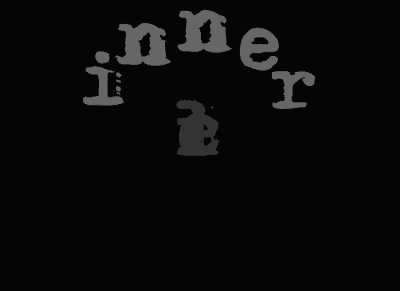Ed Schenk
The purpose of this blog entry is to collect pieces by Ed Schenk.
i^4
Predestination / Karma / Reincarnation
Ed Schenk's World
The purpose of this blog entry is to collect pieces by Ed Schenk.
i^4
Predestination / Karma / Reincarnation
Ed Schenk's World
Posted by
Kaz Maslanka
at
12:31 AM
0
comments
![]()

I would like to bring our attention to another very interesting piece (above) by the Dutch artist Ed Schenk. This one is titled “i to the fourth power” and it connotes an infinite loop of ignorance as well as asking a couple of questions. His question makes me think about asking more questions like the ones below. Can one answer be expressed as rational and the other irrational … can we express one type of ignorance being more rational and another type being more irrational?
Hmmmmm
Posted by
Kaz Maslanka
at
10:39 PM
2
comments
![]()
Labels: Ed Schenk

The following text are expressions by the Dutch Mathematical Poet, Ed Schenk
Predestination / karma / reincarnation
Some agnostics define death as:
death = life – life axiom 1)
In many religions the believe is there is something after or above death. This could be written as:
death ≠ 0 axiom 2)
Now if axiom 1 and axiom 2 are simultaneous valid, this leads to the postulate:
life ≠ life
This looks contradictory, however if we introduce the element time, axiom 1 could be written as:
death = life(n+1) – life(n),
where n is the current life. Moving variables yields: life(n+1) = life(n) + death. This could be written as:
next life = this life + death (predestination)
or
this life = next life – death This formula looks a bit strange, however this is due to semantics. If we take into account that time is not necessarily linear we could replace the word ‘next’ by the word ‘another’.
This leads to: this life = another life – death (karma)
Posted by
Kaz Maslanka
at
11:29 PM
4
comments
![]()
Labels: axiomatic poems, death, Ed Schenk, karma, life, Peano Axioms
There are about three people that are almost regular contributors to this blog and Marko Niemi is one of them. Marko has continued to keep me on my toes and has graciously sent me a link to a mathematical poem found on vispoets.com 


 Another thing that always occurs to me when I look at the Pythagorean Theorem is to ask how many dimensions I need to express what I want. Ed has chosen two for his poem and this is good however, we have the option to pick as many as we want. Since the idea of ‘world’ could bring about a visualization of the earth we could choose three dimensions and use the equation of a sphere. (This is the equation of a circle spun around a line)
Another thing that always occurs to me when I look at the Pythagorean Theorem is to ask how many dimensions I need to express what I want. Ed has chosen two for his poem and this is good however, we have the option to pick as many as we want. Since the idea of ‘world’ could bring about a visualization of the earth we could choose three dimensions and use the equation of a sphere. (This is the equation of a circle spun around a line)
Posted by
Kaz Maslanka
at
2:24 PM
0
comments
![]()
Labels: Ed Schenk, Mathematical Paradigm Poems